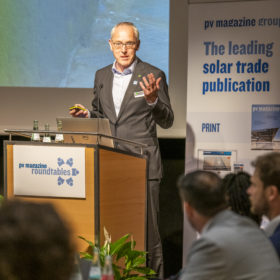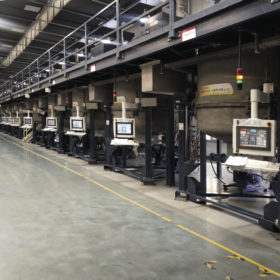Tracking in the wind
Extreme wind events are the biggest cause of failure and insurance claims for any PV plant, according to Thorsten Kray, Head of the Building Aerodynamics Department at Institut für Industrieaerodynamik GmbH, Aachen. For structural reasons, single-axis trackers are more prone to the issues than fixed-tilt structures. In this two-part series, pv magazine will examine the ways that wind impacts trackers and what EPCs and investors need to look out for, in addition to outlining a range of approaches from big tracker suppliers that were designed to mitigate wind-related damage.
Unsteady progress of a potential MENA solar superpower
With a combination of scale, a growing population, outstanding irradiation, and available capital, solar PV should be a ‘no brainer’ for the Kingdom of Saudi Arabia. But early explorations of the technology have soured expectations, and progress has come in fits and starts.
pv magazine test May 2019 results
We are happy to present the next batch of energy yield results of the outdoor test field at Xi’an, China. The May 2019 results are presented below, alongside analysis from George Touloupas, Director of Technology and Quality at CEA.
The future is subsidy free
The pitfalls of riding the ‘solar coaster,’ with boom-and-bust cycles dictated by government policies, are well known. Given this, it should come as little surprise that subsidy-free PV in Europe is a theme for which there is a particular appetite. The Future PV Roundtable and The smarter E Europe 2019 event tackled this theme. The first part of the event focused on the utility scale, and the following are some of the key takeaways.
Award window 2: best of the rest
Select highlights from the ‘balance of systems’ section of the second award window in pv magazine’s revamped award schedule necessarily features a wide array of products and PV applications. From blockchain to storage to monitoring and VPPs, the selection displays the wide array of innovation beyond PV’s building blocks.
Change to the cast
Few in the industry predicted the speed at which monocrystalline technology would develop, or the impressive cost reductions it would achieve by 2019. This has left producers of multicrystalline products facing rapidly shrinking market share and struggling to compete on a cost per watt basis. Many are now turning to cast mono processes, essentially creating a monocrystalline, or ‘mono-like’ silicon ingot in a multicrystalline furnace, to reach higher efficiencies and extend equipment lifetimes.
The importance of staying cool
“Solar cells prefer to operate in a refrigerator,” says UNSW Professor Martin Green. His global research team is now identifying viable ways to cool down solar PV modules while amping up energy production to an unprecedented level.
Does ALD live up to assembly line expectations?
As demand for atomic layer deposition equipment spreads among Chinese solar cell manufacturers, experts throughout the industry are sharing their insight on the merits of this emerging manufacturing technology. The numbers they crunch reveal tough competition for incumbent plasma-based deposition techniques. But beyond the hype, does atomic layer deposition truly offer the better deal?
Transistor transition
In pursuit of a lower levelized cost of energy for the next generation of inverters, some manufacturers have turned to acquiring considerably more expensive semiconductors. While this may sound like a misstep at first, the trick could be pulled off — though not easily, and not always — yet.
Perovskites step out of the labs
Michael van der Gugten, Sales and Marketing Executive at Smit Thermal Solutions, is convinced that perovskite solar cells have reached maturity, and that they are ready to make the step from the lab to production. He is leading the organization of a conference on this topic and expects that the perovskite community, production equipment suppliers and crystalline silicon cell manufacturers will discuss the implementation of perovskite-silicon tandem cells or the production of standalone perovskite modules.








